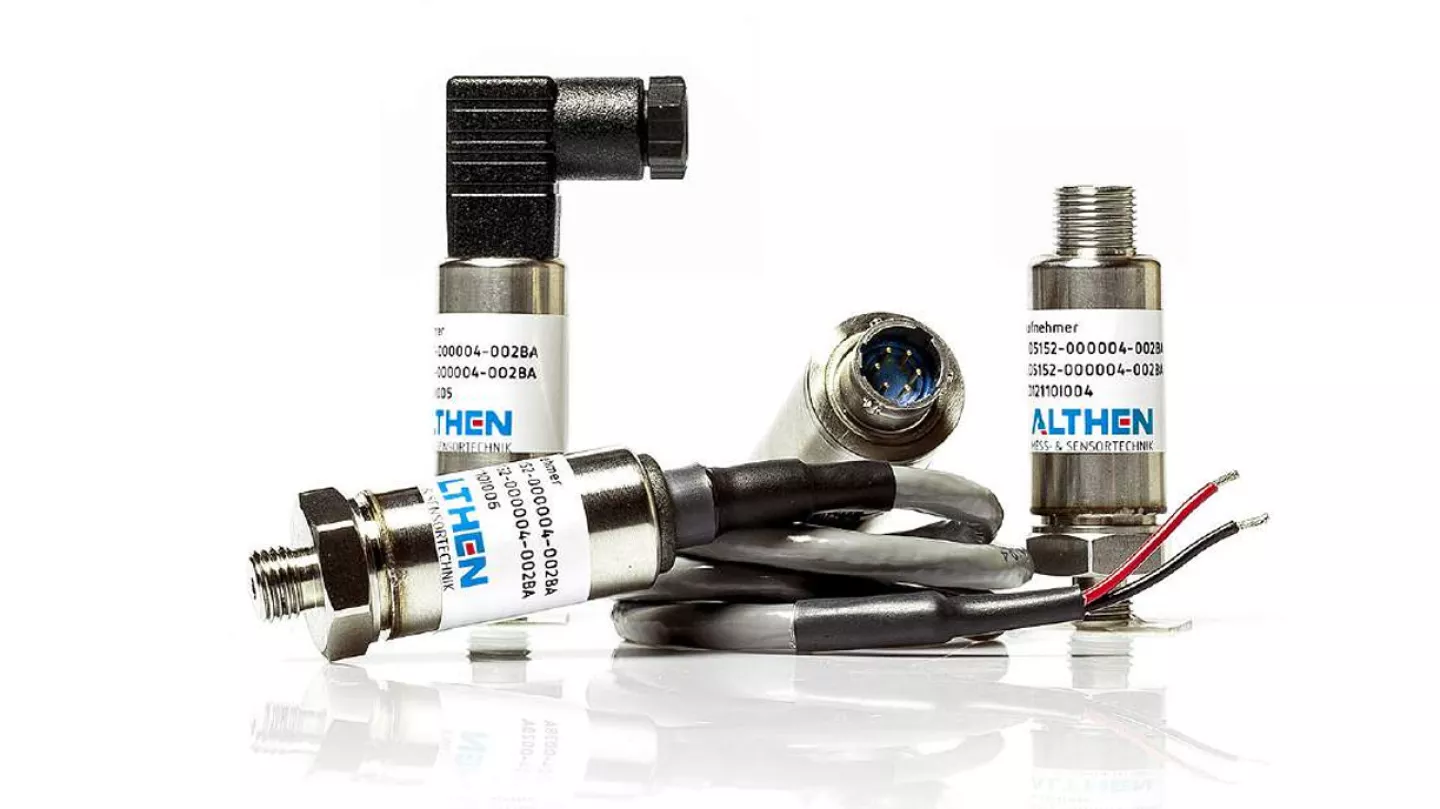When you want to measure pressure, you naturally choose a sensor that meets the desired accuracy and range you are interested in. Here, it is important to realise that peak pressure is often much higher than nominal pressure, sometimes as much as two to three times the maximum value during normal operation. With liquids, you may have to deal with water hammer: a short, intense pulse of pressure created when a tap is suddenly turned off. Most sensors cannot cope with this. So always check carefully what peak pressures to expect in your system and what a sensor can handle.
What is peak pressure and nominal pressure?
Nominal pressure, also known as working pressure, is the pressure at which a system or sensor normally functions. This is the pressure you can expect during regular, daily use of the system. The specifications of most pressure sensors are based on this nominal pressure, as it is the most common and consistent measurement. Peak pressure refers to the maximum pressure that a system or sensor can experience for a very short time. This can occur, for example, during a sudden change in the system, such as a valve closing or opening rapidly, leading to a short-lived, high pressure peak. This pressure can be many times higher than the nominal pressure, sometimes two to three times higher.
Why these concepts are important:
Sensor selection and protection: When choosing a pressure sensor, you need to consider not only the nominal pressure, but also the potential peak pressures in your system. A sensor suitable only for nominal pressure may be damaged or fail if exposed to peak pressures beyond its specifications.
System safety: Understanding both nominal and peak pressures is essential for the safety and reliability of a system. Ignoring peak pressures can lead to catastrophic system failures, leaks or even explosions, especially in systems handling hazardous or flammable substances.
Maintenance and longevity: Sensors and systems regularly exposed to peak pressures can wear out more quickly. By taking these pressures into account in the design and selection of components, you can extend system life and reduce maintenance costs.
Regulations and compliance: Many industries have regulations that set requirements for maximum allowable pressures in systems. Knowing the nominal and peak pressures helps in complying with these regulations and avoiding fines and legal problems.By understanding and managing both nominal and peak pressures, you can ensure that your system operates safely, reliably and efficiently.
Different ways of measuring pressure:
With piezoelectric pressure sensors
Piezoelectric pressure sensors are sensors that convert mechanical pressure into an electrical signal through the piezoelectric effect. This effect occurs in certain crystals and ceramic materials that, when subjected to mechanical stress (e.g., pressure or vibration), generate an electrical charge. When mechanical pressure is applied to a piezoelectric material, the internal structure of the material moves in such a way that an electric charge is generated. This charge is proportional to the pressure applied and can be measured to determine the magnitude of the pressure. Commonly used piezoelectric materials are quartz, ceramics such as lead zirconate titanate (PZT), and polymers such as PVDF (polyvinylidene fluoride). Piezoelectric sensors are highly sensitive to changes in pressure, allowing for accurate measurements. They have a fast response time, making them suitable for dynamic measurements such as vibration and shock. They are robust and can withstand extreme environmental conditions. Piezoelectric sensors are used, among other things, in machinery for vibration monitoring, quality control, and in machine tools and in the automotive industry for measuring pressure in engines, and exhaust systems.Piezoelectric sensors can be sensitive to temperature changes, which can lead to inaccurate measurements. They are less suitable for static or long-term pressure measurements because the electrical charge can leak over time.
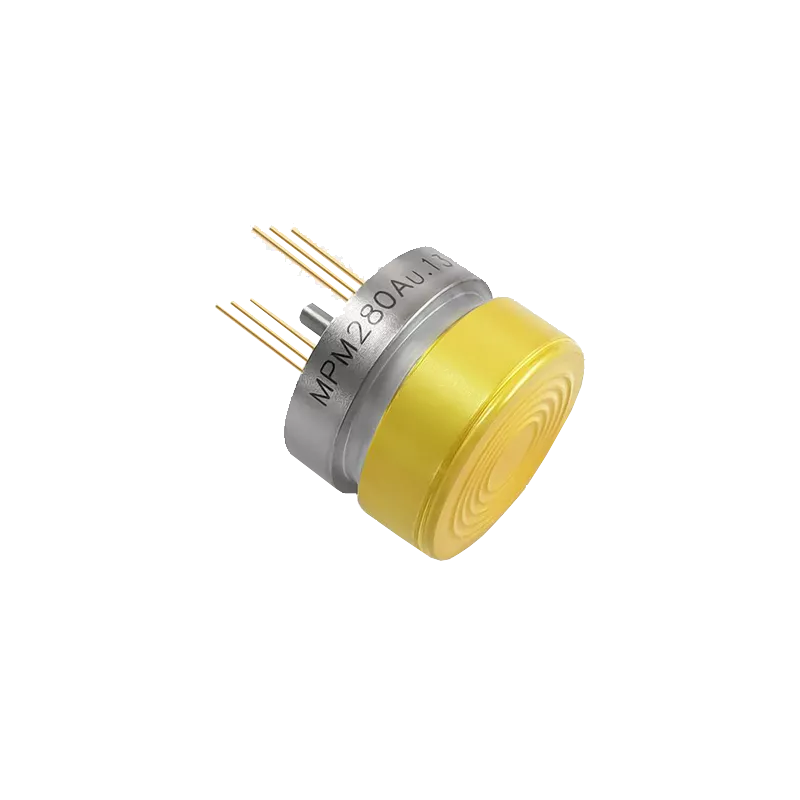
With piezo-resistive pressure sensors
There are several ways to measure pressure, using piezo-resistive material, usually silicon for the membrane. These sensors contain such a silicon membrane that bends under pressure, The mechanical deformation causes a change in the electrical resistance of the piezo-resistive material... This change in resistance is measured by an electrical circuit, usually in the form of a bridge circuit (such as a Wheatstone bridge), which converts the resistance into a change in voltage or current. The thinner the silicon membrane, the lower pressures you can detect. These sensors are popular because of their low cost and fast response time, but are vulnerable at high pressure pulses. Water hammer, for example, can cause damage. When working with hazardous materials, this is absolutely unacceptable.
Solutions to protect the piezo-resistive pressure sensors
One solution is to immerse the piezo element in oil and seal it completely with a membrane. This provides protection against high pressure, but the membrane can still rupture under extreme pressure. In the food industry, you can use this type of sensor, but you must use special food-grade oil.To measure pressure from aggressive and conductive pressure media, the silicon membrane is placed in a metal capsule with a metal (usually stainless steel or Inconel) separation membrane. The capsule is filled with silicone oil under high vacuum. The pressure applied to the separation membrane is then hydraulically transferred to the silicon membrane.
With capacitive pressure sensors
In capacitive pressure sensors pressure causes the distance between two capacitor plates to decrease, changing the capacitance. This method is very robust and can handle high pressures, but these sensors are more expensive and larger than piezo sensors, sometimes up to 25 times larger.
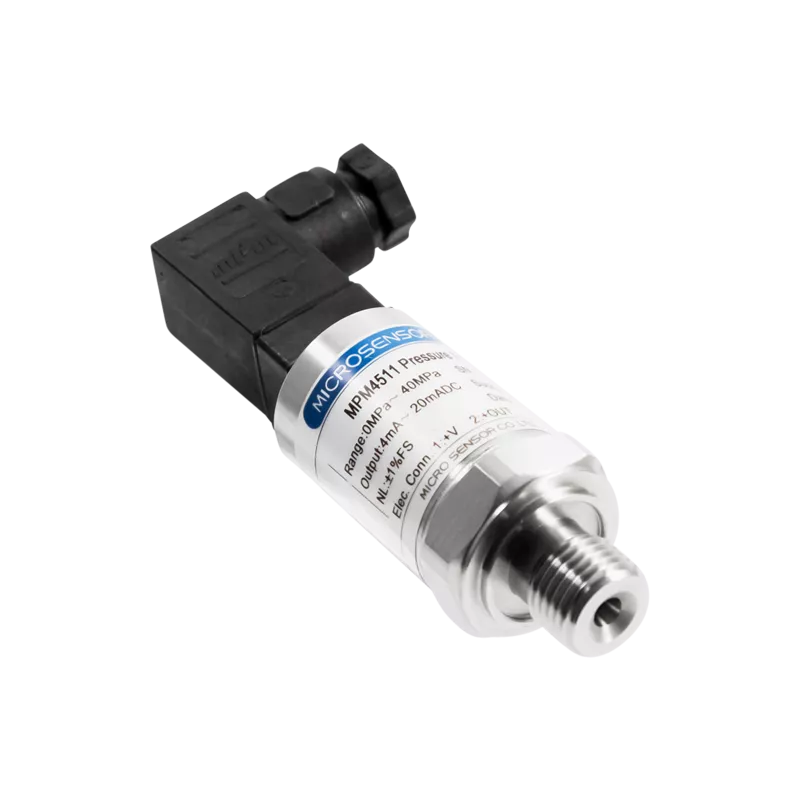
With strain gauges
Another option is strain gauge pressure sensors, similar to load cells. These sensors consist of a metal membrane with strain gauges connected in the form of a Wheatstone bridge,.A strain gauge is a sensor used to measure the deformation (strain or pressure) of an object. It consists of a conductive material, often in the form of a thin wire or foil, mounted on a flexible base. When the material to which the strain gauge is attached deforms due to an applied force, the electrical resistance of the conductive material changes. This change in resistance can be measured and used to calculate the degree of deformation.
Different types of pressure sensors:
Choosing the right pressure sensor depends heavily on the specific requirements of your application, such as pressure range, accuracy, environment, and safety requirements. By understanding the different types of pressure sensors and their application areas, you can make an informed choice that optimises the performance and reliability of your system.
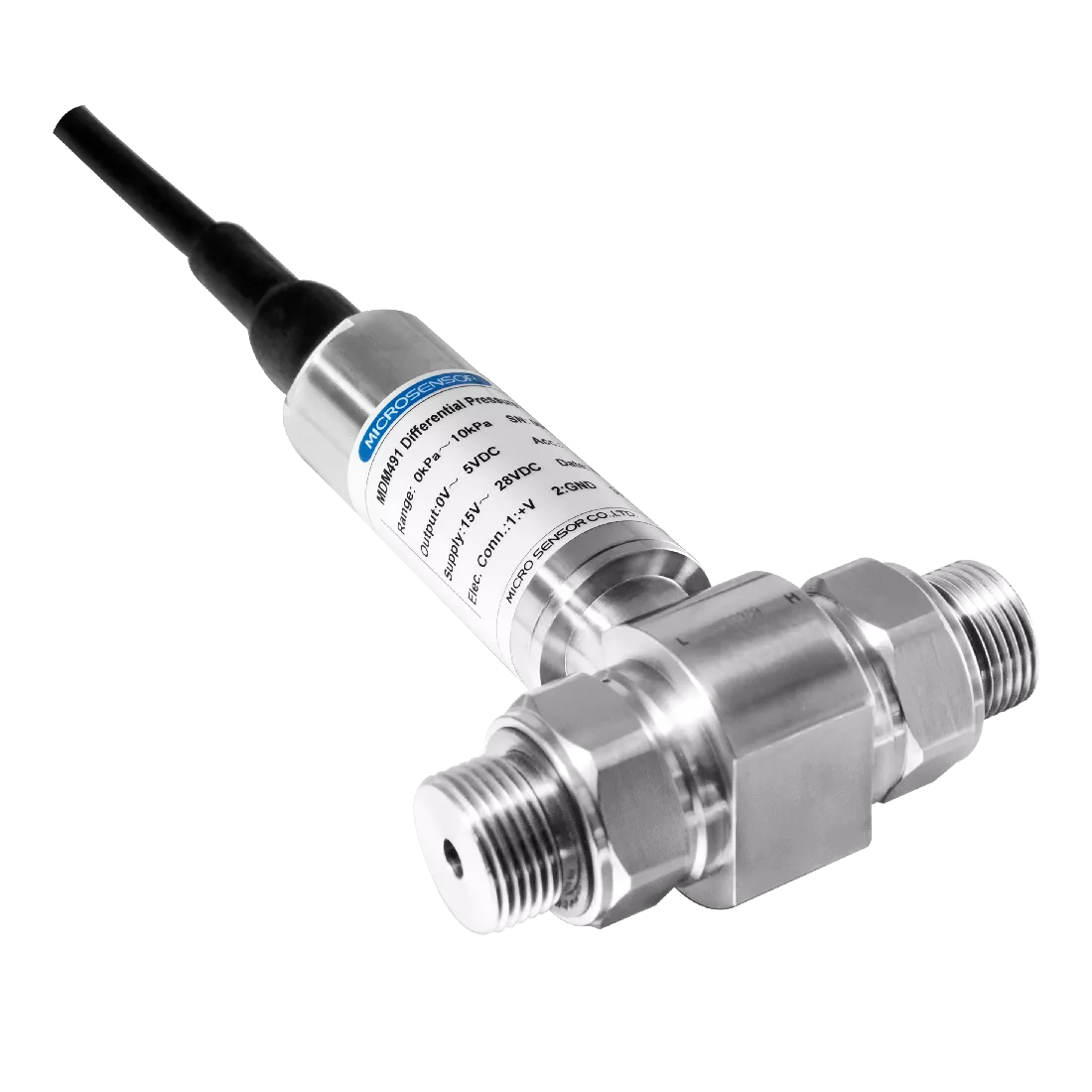
Differential pressure sensors
Differential pressure sensors measure the difference in pressure between two points. This is useful for applications such as monitoring filters, flow through pipes and level measurements in tanks. These sensors are essential in HVAC systems and in the oil and gas industry to accurately measure pressure differences.Differential pressure sensors can use piezo-resistive, capacitive or strain gauge technologies, depending on the accuracy and application required. These technologies are common because of their high accuracy and stability.
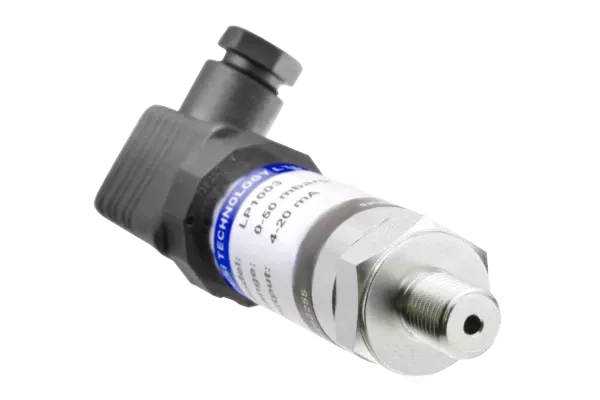
Low pressure sensors
Low pressure sensors are designed to accurately measure very low pressure levels. They are often used in applications such as weather stations, air quality monitoring, and medical devices such as respirators. These sensors offer high resolution and sensitivity to subtle pressure changes.Low pressure sensors often use capacitive technology because of its high sensitivity and accuracy at low pressure ranges. Piezo-resistive technology is less suitable in these applications.
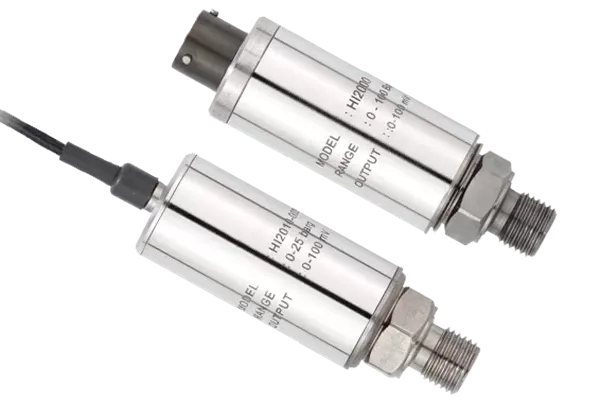
High-accuracy pressure sensors
High accuracy or high precision precision pressure sensors provide very precise pressure measurements and are used in laboratories, calibration equipment and critical industrial processes where accuracy is paramount. They often have a low margin of error and can detect small pressure changes with high reliability.For high accuracy, capacitive, piezo-resistive and strain gauge technologies are popular for their precision and stability. Piezoelectric technology can also be used, but is less commonly suited for high-accuracy applications because of its sensitivity to temperature and pressure changes.
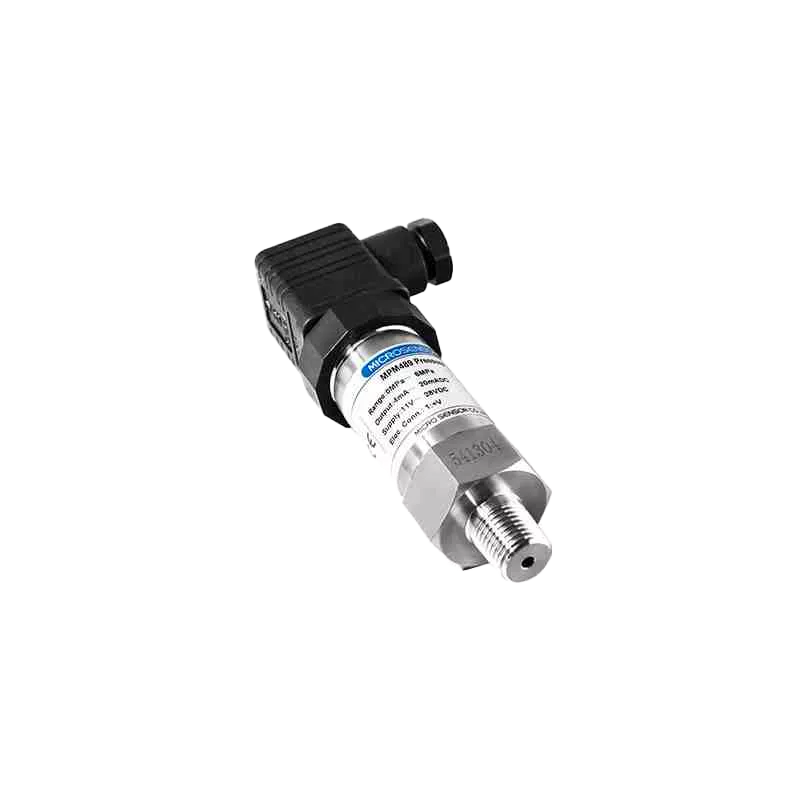
Intrinsically safe pressure sensors
Intrinsically safe pressure sensors are designed for use in hazardous environments where explosive gases or substances may be present. They are built to operate safely without the risk of sparking or overheating, which is critical in the chemical, petrochemical and mining industries.These sensors can use all three technologies, depending on the specific application and safety requirements. Capacitive, piezo-resistive, and strain gauge sensors are often favored because of their reliability in hazardous environments.

Miniature pressure sensors
Miniature pressure sensors are very small sensors that can be installed in tight or hard-to-reach areas. They are widely used in applications such as medical instruments, portable devices and compact industrial machinery. Despite their small size, they offer reliable pressure measurements.Piezo-resistive sensors are popular in miniature sensors because of their compact size and high responsiveness. Capacitive technology can also be used, but is often more difficult to miniaturize.
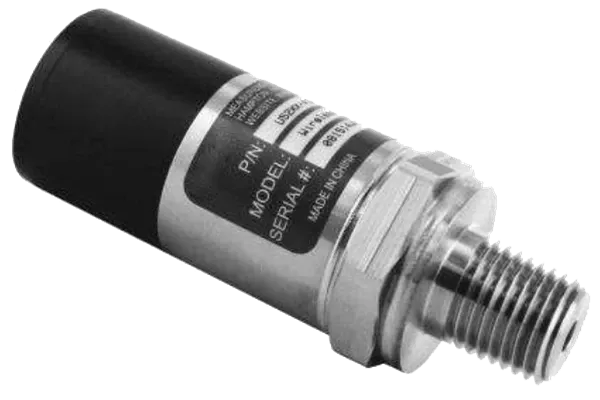
Wireless pressure sensors
Wireless pressure sensors offer the flexibility to monitor pressure measurements remotely without cabling. This is ideal for hard-to-reach or mobile applications such as transportation, agriculture and smart buildings. They can transmit data in real-time to central systems for analysis and monitoring.Wireless pressure sensors can use piezo-resistive, capacitive or strain gauge technologies, depending on the accuracy and application required. The wireless component adds additional flexibility to sensor design.
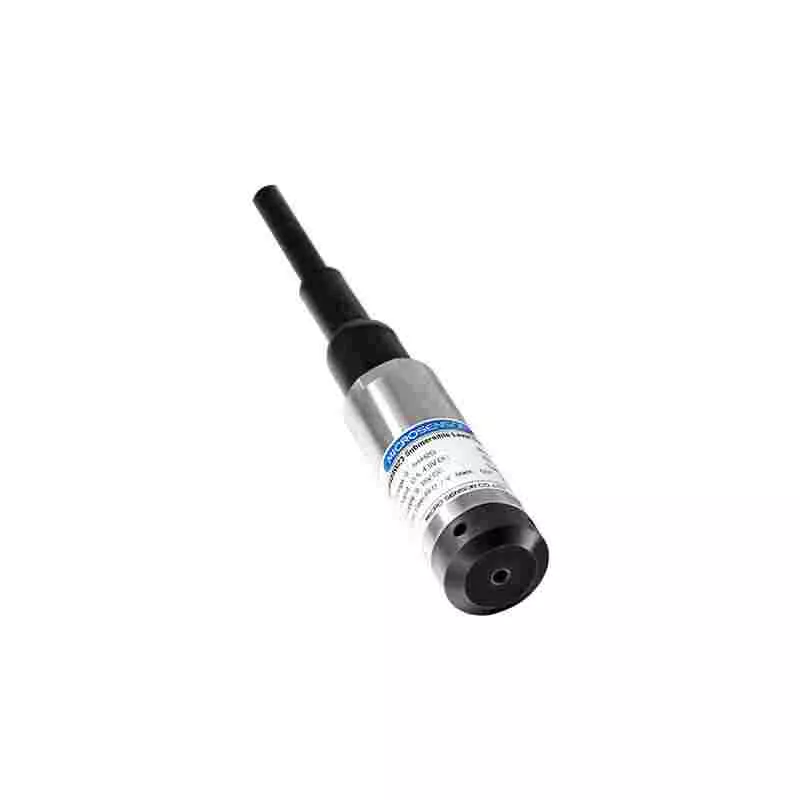
Submersible and subsea pressure sensors
Submersible pressure sensors are designed for use underwater, such as in water management, water quality monitoring, and buoys. Subsea pressure sensors are built specifically for the extreme conditions of the deep sea and are used in offshore oil and gas exploration and marine research projects. They are resistant to high pressure and corrosive seawater environments.These sensors often use piezo-resistive or strain gauge technologies because of their robustness and ability to withstand high pressure and corrosive environments. Capacitive technology can also be used, but is less common underwater.
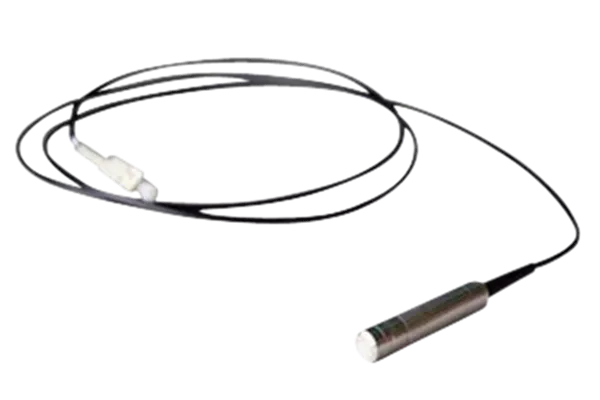
Fiber optical pressure sensors
Fiber optical pressure sensors use light in fiber optic cables to detect pressure changes. They are immune to electromagnetic interference and are suitable for applications in high-voltage environments, medical equipment and structural health monitoring. These sensors offer high accuracy and reliability over long distances. Fiber optical pressure sensors use an entirely different technology based on light and glass fibers, distinguishing them from piezoelectric, piezo-resistive, capacitive or strain gauge principles. They detect pressure changes through variations in light transmission in the fiber.
Additional considerations when choosing pressure sensors
When selecting a pressure sensor, there are a number of additional considerations to include in your consideration:
Environmental factors: Consider temperature, humidity and possible presence of corrosive substances that can affect sensor performance and lifetime.
Response time: Depending on your application, the speed at which a sensor responds to pressure changes can be critical. Faster sensors are needed for dynamic applications where pressure can vary rapidly.
Calibration and maintenance: Consider how easy the sensor is to calibrate and the maintenance requirements. Regular calibration may be necessary to ensure accurate measurements.
Compatibility with your system: Make sure the sensor is compatible with existing systems and measurement equipment. This may include electrical connections, data outputs, and communication protocols.
Lifetime and reliability: Look at the expected lifetime and reliability of the sensor in your specific application. This can save costs in the long run and improve operational efficiency.
Safety regulations and certifications: Check that the sensor meets relevant safety regulations and industry standards, especially in applications involving hazardous or medical materials.
By considering all of these factors, you can make an informed choice of the pressure sensor that best suits your specific application.
Future trends in pressure measurement
The technology surrounding pressure sensors continues to evolve, and there are some emerging trends that may be of interest:
-
Internet of Things (IoT)Smart pressure sensors that connect to networks for real-time monitoring and data analysis are on the rise. These sensors can contribute to predictive maintenance and improved operational insights.
-
NanotechnologyThe development of nanoscale sensors may lead to higher sensitivity and lower cost, as well as new applications in medical and biotechnology fields.
-
Wireless sensorsWireless pressure sensors offer flexibility and ease of installation, especially in hard-to-access or hazardous environments.
-
Self-diagnosis and calibrationInnovations in sensors with self-diagnostic and self-calibrating capabilities can further improve reliability and accuracy, and reduce maintenance costs.
More about self-diagnosis and self-calibration
Self-diagnosis refers to the ability of a pressure sensor to monitor itself and identify potential problems or anomalies without external intervention. Self-calibration refers to the ability of a pressure sensor to automatically adjust and correct its own readings without human intervention. This is important for maintaining accuracy and reliability over time and under changing conditions.
Continuity testing, for example, allows the sensor to continuously monitor the status of its own electrical circuits and report if an interruption or short circuit is detected. Also, the sensor can compare data with a known external reference source, such as atmospheric pressure or an external calibration source, and adjust itself accordingly. The sensor can monitor the performance of its internal components and provide notifications if they fall outside specified tolerances, such as a deterioration of the piezo element or a change in capacitive measurements.Using advanced algorithms and machine learning, the sensor can analyze patterns in measurement data and predict when calibration is needed. This can lead to proactive adjustments and improved accuracy.
In conclusion
Pressure sensors are crucial in a wide range of industrial and scientific applications, ranging from simple liquid level measurements to complex monitoring of heavy industrial processes. By choosing the right sensor - whether piezoelectric, piezo-resistive, capacitive, or strain gauge technologies - you can significantly improve the performance, safety, and reliability of your system.Innovations such as self-diagnostics and self-calibration offer a glimpse of the future, in which pressure sensors are not only becoming more accurate and reliable, but also smarter and more autonomous. Keep up to date with these developments through us and take full advantage of the capabilities that modern pressure sensors have to offer. Ultimately, this leads not only to better performance and lower operating costs, but also to a safer and more efficient working environment.

